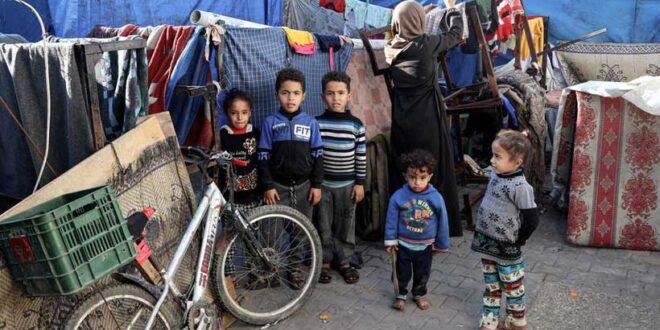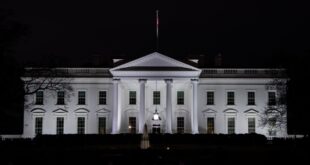The Israeli-Palestinian conflict is one of the most protracted and deeply entrenched conflicts in modern history. Within this framework, the violence and military actions in Gaza have often been described by critics as bordering on, or even amounting to, genocide against the Palestinian people. The Gaza Strip, a small enclave that has been under Israeli blockade for over a decade, has been the epicenter of repeated conflicts, causing a tremendous loss of life, widespread destruction, and worsening humanitarian conditions. This article delves into the nature of Israel’s military operations in Gaza, examines whether these actions can be considered genocidal, and explores possible solutions to bring an end to the suffering of the Palestinian people and the ongoing conflict.
The Nature of Israeli Operations in Gaza
The Gaza Strip is home to around 2.1 million Palestinians, many of whom are refugees from previous conflicts. It is often referred to as the world’s largest open-air prison due to the severe restrictions imposed by Israel and Egypt on movement in and out of the territory. Since Hamas, an Islamist group, took control of Gaza in 2007, the area has experienced several rounds of military escalation, with Israel launching major military operations in response to rocket fire from Hamas or other militant groups. Major operations, such as Operation Cast Lead (2008-2009), Operation Pillar of Defense (2012), Operation Protective Edge (2014), and most recently, confrontations in 2021 and 2023, have led to significant civilian casualties and widespread destruction.
Israeli military justifications for its actions have centered on the need to defend its citizens from Hamas’ rocket attacks, tunnels, and other military activities. The Israeli government views Hamas as a terrorist organization responsible for targeting Israeli civilians. However, the overwhelming asymmetry of power between the two sides—Israeli forces being one of the most sophisticated military powers in the world, while Gaza lacks even the most basic defenses—has led to significant civilian casualties on the Palestinian side. According to the United Nations and human rights organizations, the vast majority of the casualties in these operations have been civilians, including children and women.
The use of disproportionate force is a central critique. Human rights organizations such as Amnesty International and Human Rights Watch have accused Israel of committing war crimes during its operations in Gaza by targeting civilian infrastructure, such as homes, schools, hospitals, and water supply systems. These actions have exacerbated the already dire humanitarian situation in Gaza, where over half the population lives in poverty, unemployment is rampant, and access to basic services is limited.
Genocide or Collateral Damage?
The term “genocide” carries a specific legal and moral weight. Defined by the UN Convention on the Prevention and Punishment of the Crime of Genocide (1948), genocide is the intent to destroy, in whole or in part, a national, ethnic, racial, or religious group. While Israeli actions in Gaza have been widely condemned, there is an ongoing debate about whether they amount to genocide. Critics, particularly in the Arab world and among international human rights advocates, argue that Israel’s systematic targeting of civilians, the destruction of homes and infrastructure, and the blockade amount to acts of genocide. They claim that Israel’s policies are not just about security but are intended to erase the Palestinian identity and weaken their existence.
On the other hand, Israeli and pro-Israel voices argue that the military operations are defensive, aimed at neutralizing Hamas and other militant groups that deliberately use civilians as human shields. The concept of “collateral damage” is often invoked to explain the high civilian toll, suggesting that while tragic, these deaths are not part of an intentional plan to eradicate Palestinians as a group but are unfortunate byproducts of warfare.
However, the systematic nature of the violence, the continued blockade, and the destruction of Gaza’s infrastructure raise troubling questions about Israel’s long-term goals in Gaza. The blockade, which restricts the movement of people and goods, severely limits access to medical care, clean water, and food, leading to conditions that many have described as inhumane. This leads to the argument that while Israel may not be committing genocide in the strict legal sense, its actions are contributing to conditions that could eventually lead to the destruction of the Palestinian population in Gaza, which aligns with the broader understanding of genocide.
International Reactions and Condemnations
The international community remains deeply divided on the issue. While many Western nations, particularly the United States, provide strong diplomatic, military, and economic support to Israel, others, including many in the Global South, Europe, and the Muslim world, have condemned Israeli actions in Gaza as disproportionate and in violation of international law. The United Nations has repeatedly called for investigations into alleged war crimes by both Israel and Hamas, but these efforts have largely stalled due to political gridlock in the UN Security Council, where the United States has often used its veto to block resolutions critical of Israel.
The International Criminal Court (ICC) has also opened investigations into possible war crimes committed by both Israel and Palestinian armed groups in Gaza. However, Israel does not recognize the ICC’s jurisdiction, and these investigations have faced political and legal obstacles.
Possible Solutions
While the conflict between Israel and the Palestinians is deeply complex and resistant to easy solutions, several potential avenues could lead to a reduction in violence and a more stable, peaceful situation in Gaza.
Two-State Solution: The two-state solution has long been considered the most viable option for resolving the Israeli-Palestinian conflict. This solution envisions an independent, sovereign Palestinian state alongside Israel, with borders largely based on the 1967 lines. Gaza would become part of this Palestinian state, potentially ending its isolation and opening up the possibility of rebuilding its economy and infrastructure. However, the two-state solution has faced numerous obstacles, including Israeli settlement expansion in the West Bank, divisions between Palestinian factions, and the reluctance of some Israeli and Palestinian leaders to compromise. While the two-state solution remains a long-term goal, it will require significant international support and pressure, particularly from the United States, to become a reality.
Lifting the Blockade and Humanitarian Aid: One of the immediate steps that could alleviate the suffering of the people in Gaza would be the lifting of the Israeli and Egyptian blockades. By allowing the free movement of goods and people, Gaza’s economy could begin to recover, and its people would have access to essential services like medical care and education. While security concerns remain a key reason for the blockade, the international community could develop mechanisms, such as international peacekeeping forces or stronger UN oversight, to ensure that goods entering Gaza are not used for military purposes. In addition to lifting the blockade, international humanitarian aid needs to be significantly increased. Countries, especially those in the European Union and the Arab world, can contribute to rebuilding Gaza’s infrastructure, including schools, hospitals, and water systems, to prevent the further deterioration of living conditions.
Dialogue and Reconciliation: Another key to resolving the conflict in Gaza lies in fostering dialogue and reconciliation between Israelis and Palestinians. For years, the two sides have been trapped in a cycle of violence and retribution, with little meaningful dialogue. International mediators, including the United Nations, the Quartet on the Middle East (UN, US, EU, Russia), and regional actors such as Egypt and Jordan, should work toward bringing both sides to the negotiating table. Dialogue between Israel and Hamas, while politically difficult, should not be ruled out entirely, as excluding one of the main parties to the conflict makes long-term peace more difficult.
Addressing Root Causes: Lastly, any long-term solution must address the root causes of the conflict. These include Israel’s occupation of Palestinian territories, the denial of Palestinian self-determination, the status of Palestinian refugees, and the security concerns of both Israelis and Palestinians. Without addressing these core issues, any peace deal will only provide a temporary respite from violence.
To conclude, the situation in Gaza is a humanitarian catastrophe that continues to escalate with every passing conflict. While there is debate about whether Israel’s actions constitute genocide, the suffering of the Palestinian people is undeniable. A solution to the conflict requires a combination of humanitarian relief, political will, and international pressure. Whether through a two-state solution, lifting the blockade, or fostering meaningful dialogue, the path to peace in Gaza remains challenging but necessary to prevent further bloodshed and destruction. Only by addressing both the symptoms and root causes of the conflict can there be hope for a just and lasting peace for Israelis and Palestinians alike.
 Geostrategic Media Political Commentary, Analysis, Security, Defense
Geostrategic Media Political Commentary, Analysis, Security, Defense





